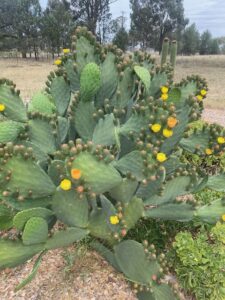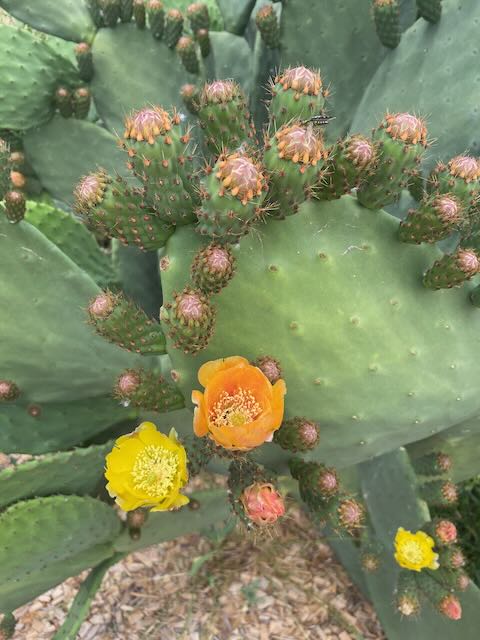 As a former Queenslander, I’ve always been slightly suspicious of the prickly pear. Prickly pear was introduced into Australia by colonialists and spread rapidly, occupying 60 million acres by the 1920s. Needless to say it was a bit of an ecological disaster. So a moth, specifically “Cactoblastis cactorum” was introduced and reduced the cactus by 80% in Queensland within 10 years.
As a former Queenslander, I’ve always been slightly suspicious of the prickly pear. Prickly pear was introduced into Australia by colonialists and spread rapidly, occupying 60 million acres by the 1920s. Needless to say it was a bit of an ecological disaster. So a moth, specifically “Cactoblastis cactorum” was introduced and reduced the cactus by 80% in Queensland within 10 years.
Aren’t insects terrifying?
However, in trying to rehabilitate my humble 12 acres, I’ve wanted for something water wise, tolerant of frost, scorching heat, shade providing and hopefully edible. Enter the humble prickly pear. I’m fairly certain my variety is Opuntia stricta, which I feel should also should be the name of a villain in a young adult fantasy novel. My variety is mostly spineless instead having little nubs of irritating hairs. The pads are supposedly edible, and it has done remarkably well with significant neglegt on my part. The soil in the bed where it was planted had been enriched with animal dung a number of years ago, but seeing as that was at least five years ago, the fertility that remains must be more than adequate for the prickly pear.

The fruit seems to be ripe when it’s literally falling off the tree. It wasn’t particularly flavourful, having a very mild, semi-sweet taste. It was juicy in the same way a pear is juicy, as compared to the relative dryness of an apple. I plan to try cooking the prickly pear pads (or more correctly nopal). They can be grilled or boiled, and I think I’ll start with the boiling method as you can over cook on the grill leading to woody nopales.
Although the fruit is nice enough, I’m not sure what could be done with it besides being a seasonal treat. I’m certainly not experienced enough with preserving to try and make jam out of the fruit, although I suspect it could be used as a filler for such an endeavour.
The prickly pear has really shone as a shelter plant protecting a nearby Jacaranda where all previous Jacarandas have succumbed to wind, frost and scorching heat. I just have to hope that mine isn’t eaten by moths.
